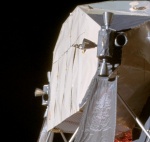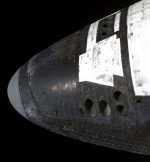Navigation/RCS
m (→RCS Thruster Maneuvering) |
m (→The Mutara Nebula Incident) |
||
| Line 97: | Line 97: | ||
| − | + | <div align=left> | |
<font size=1> | <font size=1> | ||
Revision as of 02:44, 17 May 2007
Maneuvering with Reaction Control System (RCS) Thrusters
Contents |
Reaction Control System
Background of RCS
Depending on the starship type, the system consists of a number of thrusters mostly located at the edge of the saucer hull (generic).
Thrusters
Thrusters (aka: Maneuvering thrusters) are used by starships and other spacecraft to make precise movements at very slow speeds in lieu of primary impulse or warp engine use. Thrusters are low-power reaction control jets that may be used for fine positional and attitudinal control, including station-keeping. They are typically used in docking maneuvers.
Thruster systems rely on Newton's Third Law which states: "Every action must have an equal and opposite reaction."
Positively and negatively charged particles are separated. Using a set of magnetic fields, these particles are accelerated to the direction opposite the direction the vessel or other body is trying to reach. Due to the impulse of these particles as they're expelled, a force acts on the body in the opposite direction, equal to the force with which the particles are expelled. As a result, the body is accelerated in this direction.
Thruster Location
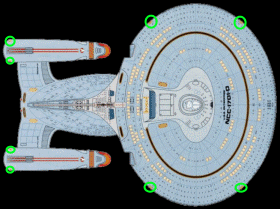
The Green Circles Indicate Typical RCS Placement
RCS Thruster Maneuvering
- Find several graphics of Cubes using 3 vectors/axes (X Y & Z).
- Upload graphics of Mutara Nebula (Kirk v Khan) maneuvering.
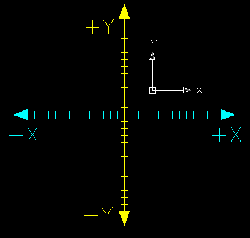
|
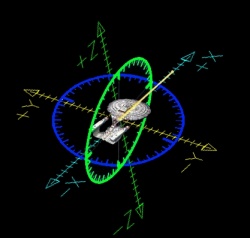
|
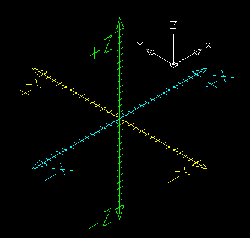
|
X = Straight Forward & backward; Y = Port & Starboard; Z = Straight Up & Down
To Move:
- Forward - all Aft Facing Thrusters would activate
- Reverse - all Fore Facing Thrusters would activate
- Side Slip to Port - All Starboard Thrusters would activate
- Side Slip to Starboard - All Port Thrusters would activate
- Straight Up - All Ventral Thrusters would activate
- Straight Down - All Dorsal Thrusters would activate
- To Pivot Left - Fore Starboard & Aft Port Thrusters would activate.
- To Pivot Right - Fore Port & Aft Starboard Thrusters would activate.
- To Roll Left - Dorsal Port & Ventral Starboard Thrusters would activate.
- To Roll Right - Dorsal Starboard & Ventral Port Thrusters would activate.
(More to come)
The Mutara Nebula Incident
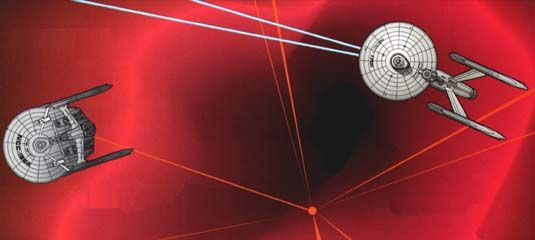
Phenomena like the Mutara Nebula decrease the ability of a spaceship to utilize sensors.
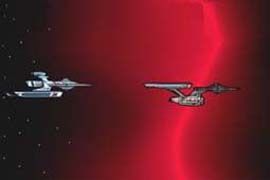
|
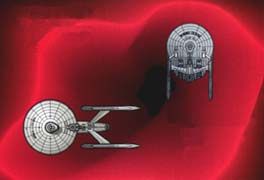
|
| Kirk orders the Enterprise into the Nebula, where he can even the odds against a "Superior" opponent. |
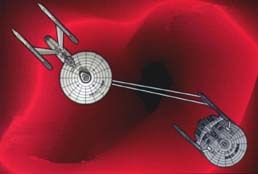
|
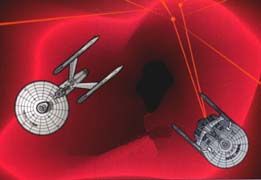
|
| The Enterprise was able to spot Reliant and get off a few quick disabling shots. Reliant tried to fire torpedoes, but could not lock onto Enterprise, which had already changed course. |
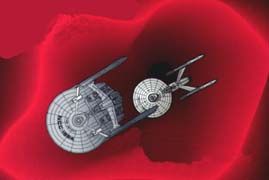
|
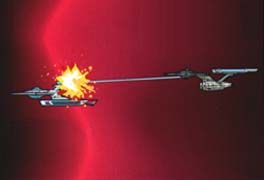
|
| When Spock realizes that Khan is using 2 Dimentional tactics & strategy, Kirk orders a course of "Z -10000 Meters, allowing Reliant to pass overhead. Kirk then orders a return to original course to arise behind the Reliant and
fires, completely disabling Reliant. |
Resources
- Star Trek: The Next Generation Technical Manual, pgs 87 & 88
- Federation Data-bank
- Babelfish Translation To assist in translating Federation Database Information.
- Whatever else I can find and scavenge
![]()
Rob Johnson, IC 2004-2007
15 May 2007
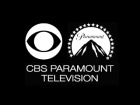
|
Star Trek®,StarTrek.com, Star Trek: The Next Generation®, Star Trek: Deep Space Nine®, Star Trek: Voyager®, and Enterprise® are registered trademarks of CBS Paramount Television & Viacom. All material found on these pages are for promotional purposes only. No infringements on their copyright is intended. These are Star Trek Fan Pages. |
